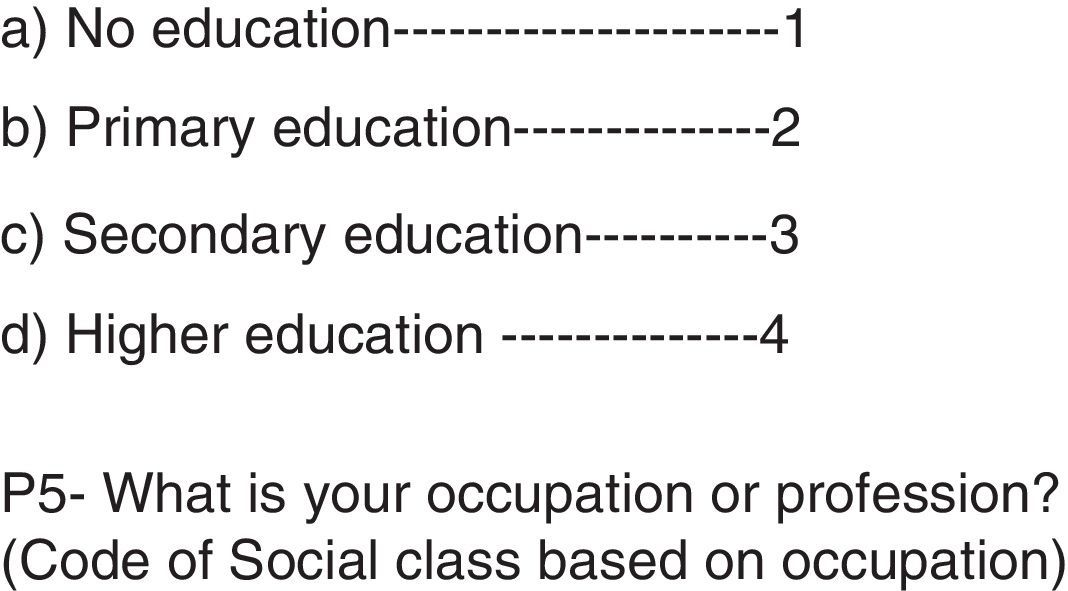Urolithiasis is a common urologic condition with increasing incidence in the population worldwide. In Andalusia (Spain), the PreLiRenA study showed a high prevalence (16.4%; 95% confidence interval [95% CI] 14.8–17.8) of this condition in population aged between 40 and 65 years. The interesting results reported in that study encouraged us to further investigate the magnitude of this condition at a national level. We aimed to estimate the prevalence of urolithiasis in the Spanish population aged between 40 and 65 years.
Patients and methodThis is an observational, cross-sectional, prevalence, stratified sampling study by Spanish region, sex and age. A total of 2444 telephone interviews were conducted using a questionnaire that covered several sociodemographic and clinical variables. Bivariate, descriptive statistical study was performed. The prevalence ratio (PR) with the 95% CI was calculated.
ResultsOf the 2444 subjects interviewed, 51.2% (n=1251) were women. The prevalence and incidence of urolithiasis were 14.6% (95% CI 13.1–15.9) and 2.9% (95% CI 2.2–3.6), respectively. Significant differences were found by age, with a higher prevalence in 46–50 years (PR 1.58; 95% CI 1.12–2.21; p<.001) and 61–65 years (PR 1.47; 95% CI 1.02–2.13), and upper-class subjects (PR 1.75; 95% CI 1.07–2.86; p<.024). Of respondents, 52.8% had experienced more than one episode of urolithiasis. A total of 46.9% passed the calculus spontaneously, and 51.1% were diagnosed in the Emergency Unit.
ConclusionsThe prevalence of urolithiasis in the Spanish population aged between 40 and 65 years is high; especially among upper-class subjects and in middle-aged. A high recurrence rate is also observed.
La urolitiasis constituye una afección frecuente, cuya prevalencia se ha incrementado a nivel mundial. En Andalucía (España) el estudio PreLiRenA mostró una elevada prevalencia (16,4%; intervalo de confianza al 95% [IC 95%] 14,8–17,8) en población de 40 a 65 años, lo cual nos hizo cuestionarnos cuál sería la situación a nivel nacional. El objetivo fue estimar la prevalencia de urolitiasis en la población española de entre 40 y 65 años.
Pacientes y métodoEstudio observacional, transversal, mediante muestreo estratificado según las regiones del país, sexo y edad. Se realizaron un total de 2.444 entrevistas telefónicas mediante un cuestionario que incluía variables sociodemográficas y clínicas. Se realizó una estadística descriptiva y bivariada, calculando las ratios de prevalencia (RP) con IC 95%.
ResultadosDe los 2.444 sujetos entrevistados, el 51,2% (n=1.251) eran mujeres. La prevalencia de urolitiasis fue del 14,6% (IC 95% 13,1-15,9), y la incidencia, del 2,9% (IC 95% 2,2-3,6). Se observaron diferencias significativas respecto a la edad, con una mayor prevalencia en pacientes de 46-50 años (RP 1,58; IC 95% 1,12-2,21; p<0,001) y 61-65 años (RP 1,47; IC 95% 1,02-2,13), así como de clase social elevada (RP 1,75; IC 95% 1,07-2,86; p=0,024). Un 52,8% presentó más de un episodio de urolitiasis. El 46,9% expulsó el cálculo espontáneamente y el 51,1% fue diagnosticado en Urgencias.
ConclusionesSe observa una elevada prevalencia de urolitiasis entre la población española de 40 a 65 años, sobre todo entre los sujetos de clase social superior y mediana edad, así como una alta tasa de recurrencia.
















